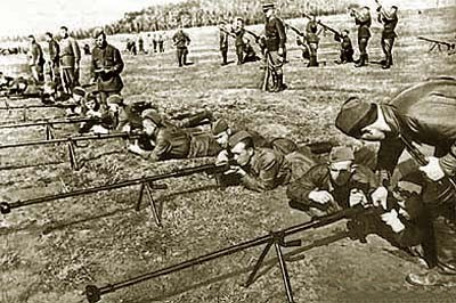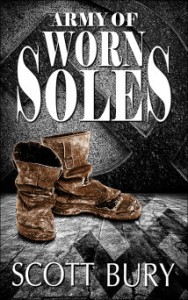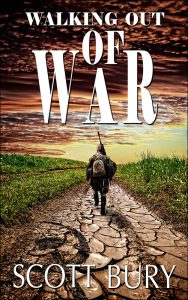As you, my faithful readers know, I recently published the third book in my Eastern Front trilogy about the experiences of my father-in-law, Maurice Bury, during the Second World War. Writing those three slim books took me more than 10 years. Not only because the story itself is dark and difficult, but also because it required a lot of research to get the details right.
While there must be thousands of books and other sources about the Second World War, most of it, at least those in English, focus on the western part of it, with a British, American or, sometimes, Canadian perspective. There is relatively little in English about the Eastern Front, where Maurice was drafted by the Soviet Red Army.
My research for the books began with the subject, my father-in-law himself. While he had occasionally mentioned something about his time in the army, at one point in the 1990s I decided I would write a book about his story. So we sat down in his kitchen, and I took notes.
But before I could complete writing the book, Maurice passed away. Which meant that any information I still needed, I would have to find in other sources.
Trusting memory
When I began writing the story, I realized I would have to turn to history books for essential background information about the war, the politics, weapons, organization of the armies and so much more.
Maurice’s memory of his own experiences was excellent, but he did not remember the exact dates, nor the number of his unit. When he told me how he sustained his wound, he remembered the weather, the German fighter planes arcing in the sky. But he did not remember the exact date. I had to do some research to work out when the Germans got to Kyiv, and the extent of the fighting there in 1941.
I also had to research the weapons used. Maurice told me as a Third Lieutenant, he commanded eleven men in an anti-tank unit. When he described fighting against the German tanks, the Panzers, it seemed to me to require some precision. The shell had to hit the tank at just the right angle to penetrate the armour and detonate inside. The challenge was that the modern Panzers had sloping armour to deflect anti-tank shells. The Soviet tanks in the early part of the war, on the other hand, had straight armour, making it easier for an armour-piercing shell to strike at the right angle.
But I neglected to ask him to describe the Soviet anti-tank gun. When I came to write about it, I realized I had no idea what it looked like. The answer surprised me. I had thought of a kind of cannon, but the PTRS-41 and the similar PTRD were strangely delicate-looking. They looked more like long rifles with extended, slender barrels. My first thought was “That little thing can knock out a tank?”

It turns out, it didn’t manage to do that very often. The shells could not penetrate the Panzers’ front armour, so the Soviet anti-tank gunners would try to shoot at the sides or back of the tanks, where the armour was thinner. That was an extremely risky tactic, requiring the gunners to allow the Panzers to pass them before shooting.
Finding this information in historical sources brought me back to the notes I took when interviewing Maurice before he passed away. He once told me that his men destroyed a Panzer by shooting at the back, hitting the exposed fuel tank.
As a writer, this was a satisfying—to find confirmation of Maurice’s memories and stories in the history books and websites.
What’s your experience?
Have you ever found that kind of confirmation of a relative’s or friend’s memory or story in an official or historical reference? Share that in the Comments.




Permalink
Yes. My uncle was on a submarine that went missing in WWII and was not located until 2006. I read a memoir written by a sailor who was on the ship until the final mission then came across an article that verified his story.